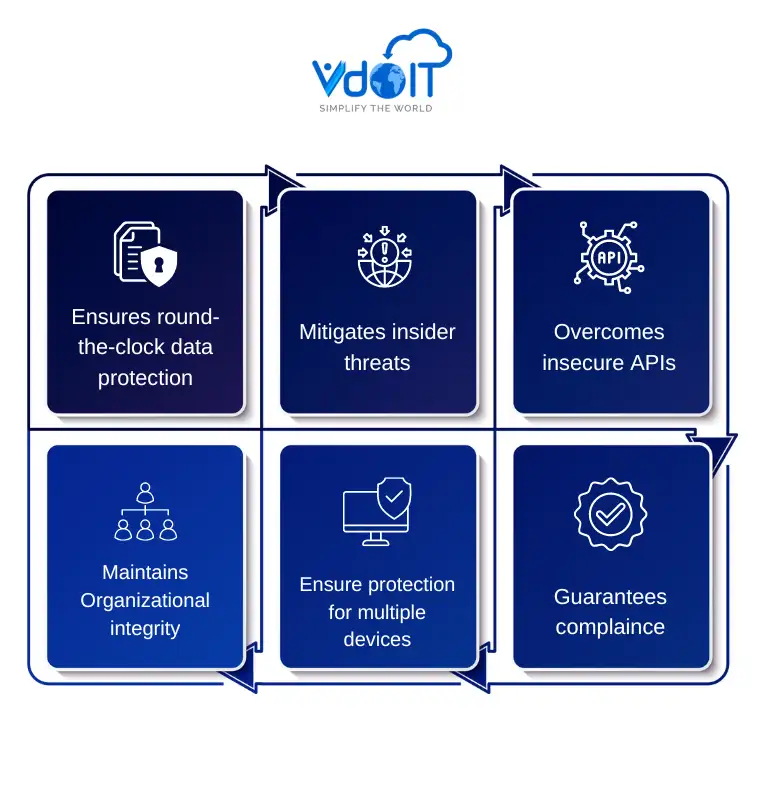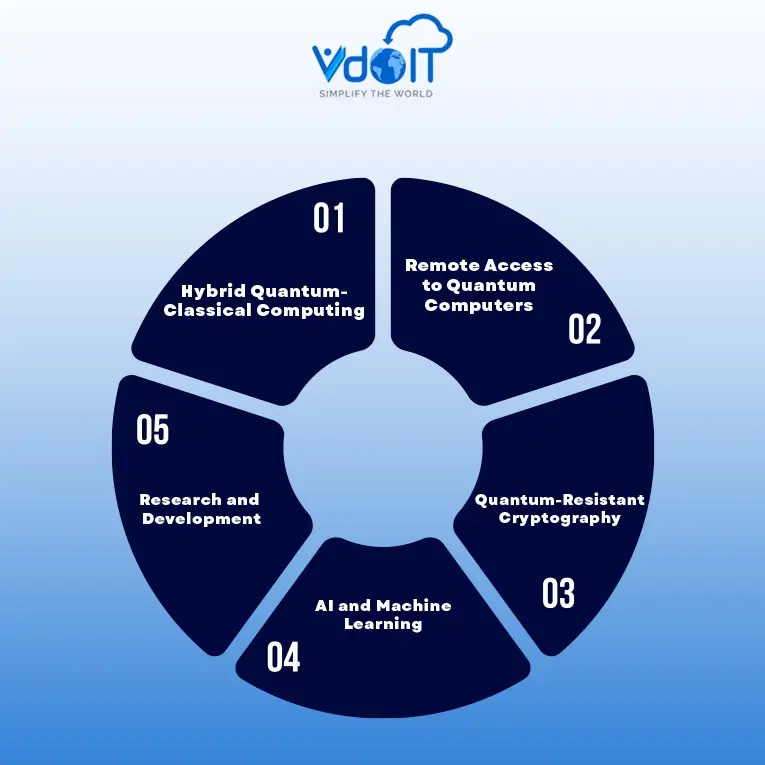Cloud computing has revolutionized the way businesses and individuals manage and store data, offering unprecedented flexibility, scalability, and cost-efficiency. However, with these advantages come significant security concerns, particularly related to the confidentiality, integrity, and availability of data.
Cryptography plays a crucial role in addressing these concerns by providing robust mechanisms to protect sensitive information in cloud environments. This article explores the essential aspects of cryptography in cloud computing, its importance, methods, and best practices to enhance data security.
The Importance of Cryptography in Cloud Computing
Here’s why cloud cryptography is important:
1. Protecting Data Confidentiality
Confidentiality ensures that data is accessible only to authorized users. In cloud computing, where data is often stored in remote servers and transmitted over the internet, the risk of unauthorized access is high. Cryptography helps mitigate this risk by encrypting data, making it unreadable to anyone who does not have the appropriate decryption key.
2. Ensuring Data Integrity
Data integrity ensures that information is not altered during storage or transmission. Cryptographic hash functions and digital signatures are used to verify that data has not been tampered with. This is particularly important in cloud environments, where data may traverse multiple networks and systems.
3. Authentication and Authorization
Cryptography also plays a vital role in authentication (verifying the identity of users) and authorization (granting permissions to users). Techniques such as public key infrastructure (PKI) and digital certificates are used to establish trust and secure access controls in cloud computing.
Table 1: Importance of cryptography in cloud computing
| Aspect | Description |
| Protecting Data Confidentiality | Ensures that data is accessible only to authorized users. Mitigates risk by encrypting data. |
| Ensuring Data Integrity | Verifies that data has not been altered during storage or transmission using hash functions and digital signatures. |
| Authentication and Authorization | Verifies the identity of users and grants permissions using techniques like PKI and digital certificates. |
Techniques of Cryptographic in Cloud Computing
These suggest the cryptographic techniques in cloud computing
1. Symmetric Key Cryptography
Symmetric key cryptography uses a single key for both encryption and decryption. This method is fast and efficient for encrypting large amounts of data. However, the challenge lies in securely distributing and managing the encryption keys. Common symmetric encryption algorithms include Advanced Encryption Standard (AES) and Triple Data Encryption Standard (3DES).
2. Asymmetric Key Cryptography
Asymmetric key cryptography, also known as public-key cryptography, uses a pair of keys: a public key for encryption and a private key for decryption. This method enhances security by eliminating the need to share the private key. RSA (Rivest-Shamir-Adleman) and ECC (Elliptic Curve Cryptography) are widely used asymmetric encryption algorithms. Asymmetric encryption is often used for secure key exchange and digital signatures.
3. Hash Functions
Hash functions convert data into a fixed-size string of characters, which is typically a digest that uniquely represents the input data. Hash functions are fundamental for ensuring data integrity. SHA-256 (Secure Hash Algorithm 256-bit) is a commonly used cryptographic hash function in cloud computing.
4. Digital Signatures
Digital signatures provide a way to verify the authenticity and integrity of digital messages or documents. They use asymmetric cryptography to create a unique signature that can be verified by anyone with the public key. Digital signatures are essential for secure communications and transactions in the cloud.

Table 2: Cryptographic Techniques in Cloud Computing
| Technique | Description | Algorithm |
| Symmetric Key Cryptography | Uses a single key for both encryption and decryption; fast and efficient. | AES, 3DES |
| Asymmetric Key Cryptography | Uses a pair of keys: a public key for encryption and a private key for decryption; enhances security. | RSA, ECC |
| Hash Functions | Converts data into a fixed-size string of characters to ensure data integrity. | SHA-256 |
| Digital Signatures | Verifies authenticity and integrity of digital messages or documents using asymmetric cryptography. | RSA, DSA (Digital Signature Algorithm) |
Implementing Cryptography in Cloud Computing
Reasons why it’s important to implement cloud cryptography.
1. Data Encryption
Encrypting data at rest and in transit is a fundamental practice in cloud security. Data at rest includes files stored on cloud servers, while data in transit refers to data being transmitted between devices and cloud services.
Implementing encryption protocols like TLS (Transport Layer Security) for data in transit and using strong encryption algorithms for data at rest ensures that sensitive information remains protected.
2. Key Management
Effective key management is crucial for maintaining the security of encrypted data. Cloud providers offer key management services (KMS) that help generate, distribute, store, and rotate encryption keys. AWS Key Management Service and Google Cloud KMS are examples of such services.
Proper key management practices include using hardware security modules (HSMs) and ensuring that keys are rotated regularly to minimize the risk of compromise.
3. Identity and Access Management (IAM)
IAM solutions leverage cryptographic techniques to manage user identities and control access to cloud resources. By implementing multi-factor authentication (MFA), role-based access control (RBAC), and single sign-on (SSO), organizations can enhance the security of their cloud environments. Cryptographic methods like digital certificates and tokens are used to verify user identities and enforce access policies.
Table 3: Cryptography Implementation
| Implementation Area | Description |
| Data Encryption | Encrypting data at rest and in transit using protocols like TLS and strong encryption algorithms. |
| Key Management | Generating, distributing, storing, and rotating encryption keys using services like AWS KMS and Google Cloud KMS. |
| Identity and Access Management (IAM) | Managing user identities and access controls using MFA, RBAC, SSO, and cryptographic methods like digital certificates. |
Challenges and Best Practices
Let’s take a look at the challenges and best practices in cloud cryptography
1. Performance Overhead
One of the primary challenges of cryptography in cloud computing is the performance overhead associated with encryption and decryption processes. While encryption algorithms have become more efficient, they still introduce latency and consume computational resources. To mitigate this, organizations should balance security and performance by selecting appropriate encryption methods and optimizing their implementations.
2. Compliance and Legal Considerations
Organizations must ensure that their use of cryptography in the cloud complies with relevant regulations and industry standards. This includes adhering to data protection laws such as GDPR (General Data Protection Regulation) and industry-specific standards like HIPAA (Health Insurance Portability and Accountability Act) for healthcare data. Cloud providers typically offer compliance certifications to help organizations meet these requirements.
3. Vendor Trust and Data Sovereignty
When using cloud services, organizations must trust their cloud providers to implement robust security measures. This includes ensuring that the provider uses strong encryption methods and adheres to best practices for key management.
Additionally, data sovereignty concerns may arise when data is stored in different jurisdictions. Organizations should select cloud providers that offer transparent policies and options for data residency.

Table 4: Describing the Challenges & Best Practices of Cloud Cryptography
| Challenge | Description | Best Practices |
| Performance Overhead | Encryption and decryption processes introduce latency and consume resources. | Balance security and performance by selecting appropriate encryption methods and optimizing implementations. |
| Compliance and Legal Considerations | Ensuring compliance with data protection laws and industry standards. | Adhere to regulations like GDPR and HIPAA; utilize cloud provider compliance certifications. |
| Vendor Trust and Data Sovereignty | Trusting cloud providers to implement robust security measures and handling data residency concerns. | Select providers with transparent policies and data residency options. |
Future Trends in Cloud Cryptography
Cryptography in cloud computing is likely to witness the following trends in the future.
1. Homomorphic Encryption
Homomorphic encryption allows computations to be performed on encrypted data without decrypting it. This technology has the potential to revolutionize cloud computing by enabling secure data processing and analytics in the cloud. While still in its early stages, homomorphic encryption promises to enhance privacy and security for cloud-based applications.
2. Quantum-Resistant Cryptography
With the advent of quantum computing, traditional cryptographic algorithms may become vulnerable to attacks. Quantum-resistant cryptography aims to develop new algorithms that can withstand quantum computing threats. As this field advances, cloud providers and organizations will need to adopt quantum-resistant techniques to future-proof their security measures.
3. Cloud Cryptography and It’s Increasing Importance
Cryptography is indispensable for securing data in cloud computing environments. By implementing robust cryptographic techniques, managing keys effectively, and adhering to best practices, organizations can protect their sensitive information from unauthorized access and ensure data integrity.
As cloud computing continues to evolve, staying informed about emerging trends and technologies in cryptography will be essential for maintaining strong security postures.
Table 5: Future of Cloud Computing Cryptography
| Trend | Impact |
| Homomorphic Encryption | Allows computations on encrypted data without decryption, enhancing privacy and security for cloud-based applications. |
| Quantum-Resistant Cryptography | Develops new algorithms to withstand quantum computing threats, ensuring future-proof security measures. |
| Increasing Importance of Cloud Cryptography | Essential for securing data, managing keys, and adhering to best practices in evolving cloud environments. |
Advantages of Cloud Cryptography
Cloud cryptography offers robust security for data stored, processed, and transmitted in cloud environments. One of its primary advantages is the enhanced protection against data breaches, which helps prevent unauthorized access to sensitive information.
By encrypting data, even if hackers manage to access it, they cannot decipher it without the correct encryption keys. Cloud cryptography also facilitates secure communication between users and cloud services by encrypting data in transit, ensuring that confidential information remains private.
Another advantage is compliance with data protection regulations such as GDPR or HIPAA, where cloud cryptography ensures that data is stored in a manner that aligns with legal requirements.
It also boosts user trust, especially for businesses that handle sensitive data like financial information or personal health records. Scalability is another benefit, as cloud cryptography solutions are adaptable, allowing businesses to increase or decrease security measures based on demand.
Lastly, cloud cryptography often reduces the cost of implementing security measures. Cloud providers typically offer encryption services as part of their broader security solutions, making it more affordable and efficient compared to building in-house cryptographic systems.
Disadvantages of Cloud Cryptography
Despite its many benefits, cloud cryptography comes with several disadvantages. One of the primary concerns is the complexity associated with encryption management. Proper key management is critical to ensuring the security of encrypted data, but mismanagement can lead to unauthorized access or permanent data loss if keys are lost.
Many organizations may also rely heavily on their cloud service providers for encryption, which can create trust and control issues.
Another disadvantage is performance degradation. Encrypting and decrypting large amounts of data can be resource-intensive and slow down systems, especially for applications requiring real-time data access.
Cloud cryptography can also introduce latency in data transmission, particularly when handling large datasets or high-volume transactions, which can affect the user experience.
Legal and jurisdictional issues are another drawback. Data stored in the cloud may be subject to the laws of the country where the data center is located. This can create complications if encryption practices or data privacy regulations differ across regions.
Finally, the cost of managing and maintaining encryption tools and services, while generally lower than in-house solutions, can still be significant depending on the size and needs of the organization.
Key Points Related to Cloud Cryptography
Cloud cryptography plays a crucial role in securing data stored and processed in the cloud. It primarily involves the use of encryption to protect data at rest, in transit, and during processing.
A key component of cloud cryptography is encryption key management, which determines who has access to decrypt the data and ensures that the data remains secure even in the event of a breach. Strong encryption algorithms, such as AES (Advanced Encryption Standard), are often used for cloud cryptography to provide a high level of security.
One of the central ideas behind cloud cryptography is ensuring that even cloud service providers do not have access to the unencrypted data of their clients, reinforcing data confidentiality.
Public key infrastructure (PKI) and symmetric encryption are both commonly employed in cloud environments, depending on the specific use case.
Cloud cryptography also supports compliance with industry standards and regulations, as encryption is often a requirement for protecting sensitive data, especially in sectors like healthcare, finance, and government.
However, secure encryption key management, cross-border legal considerations, and potential performance impacts should always be evaluated when implementing cloud cryptographic solutions. These factors make cloud cryptography an essential but complex tool in modern cybersecurity practices.
Cloud Encryption and Services Made Simple
Cryptography is essential for ensuring data security in cloud computing, addressing critical concerns related to confidentiality, integrity, and availability. By encrypting data, verifying its integrity, and managing access controls, cryptography provides a robust framework for protecting sensitive information in cloud environments.
Techniques such as symmetric and asymmetric encryption, hash functions, and digital signatures play pivotal roles in safeguarding data against unauthorized access and tampering. Implementing effective cryptographic practices, including data encryption, key management, and identity and access management, helps organizations maintain a secure cloud infrastructure.
Despite challenges like performance overhead and compliance requirements, adhering to best practices and staying informed about emerging trends like homomorphic and quantum-resistant encryption are vital for future-proofing cloud security.
VDOIT Technologies is at the forefront of delivering secure and innovative cloud computing solutions. Our expertise in implementing advanced cryptographic techniques ensures that your data remains protected against evolving threats.
Trust VDOIT Technologies to provide comprehensive cloud services that enhance your security posture and compliance with industry standards. Contact us today to learn how our tailored cloud computing solutions can help your organization achieve unparalleled security, scalability, and efficiency in the digital age.
Secure your cloud infrastructure with VDOIT Technologies—where cutting-edge technology meets trusted expertise.
FAQs on Cryptography in Cloud Computing
How can organizations securely manage encryption keys in the cloud?
Organizations can use cloud provider key management services (KMS) like AWS KMS or Google Cloud KMS, which offer secure generation, distribution, storage, and rotation of encryption keys, ensuring effective and secure key management practices.Add image
What is homomorphic encryption and why is it important for the cloud?
Homomorphic encryption allows computations to be performed on encrypted data without decryption, enhancing privacy and security for cloud-based data processing and analytics, making it a promising technology for secure cloud computing in the future.
What measures can be taken to reduce the performance overhead of encryption?
To reduce performance overhead, organizations can optimize encryption implementations, choose efficient algorithms, and leverage hardware acceleration and specialized cryptographic hardware like hardware security modules (HSMs) to balance security and performance.
How do digital signatures enhance security in cloud transactions?
Digital signatures use asymmetric cryptography to verify the authenticity and integrity of digital messages and documents, ensuring that data exchanged in the cloud is not tampered with and is from a verified source, thus securing cloud transactions.
What are the key compliance considerations for using cryptography in the cloud?
Key compliance considerations include adhering to regulations like GDPR, HIPAA, and industry standards, ensuring that encryption practices meet legal requirements, and selecting cloud providers with necessary certifications to demonstrate compliance and data protection.

